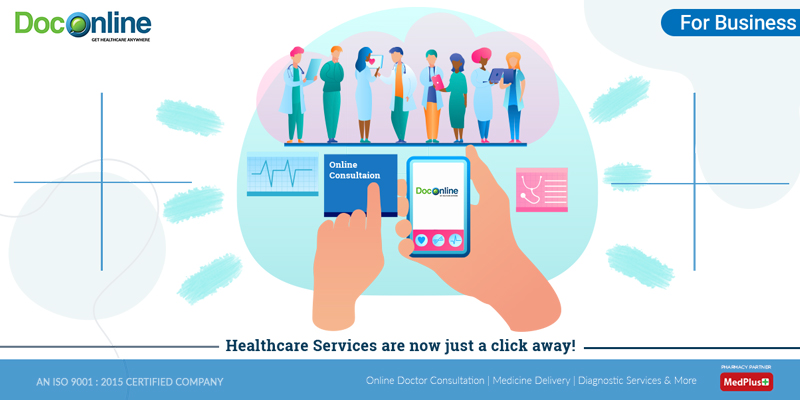Understanding the Cost-Effectiveness of Subscription-Based Medical Care Designs
As the health care landscape develops, subscription-based models arise as a compelling alternative, promising to redefine how people take care of medical expenses. Examining these versions' cost-effectiveness demands a nuanced contrast with traditional insurance policy, thinking about both economic implications and individual fulfillment. While they provide openness and predictability in prices, inquiries stay regarding their capacity to satisfy varied healthcare needs, specifically for specialized treatments. The viewpoints of medical care suppliers additionally complicate this formula, providing a multifaceted challenge. What does the future hold for these models, and can they truly provide on their assurance of obtainable, inexpensive care?
Review of Subscription-Based Models
Subscription-based healthcare models, sometimes referred to as direct primary treatment or concierge medicine, are significantly gaining attention as a prospective option to inefficiencies within standard health care systems. These versions operate the concept of offering patients direct access to medical care carriers through a yearly or monthly cost, bypassing the need for typical insurance policy systems. This arrangement aims to simplify patient-provider interactions by decreasing management burdens, which usually impede timely and personalized care.
At the core of subscription-based designs is the focus on a more individualized patient experience. Clients gain from enhanced accessibility to their physicians, usually including next-day or same-day consultations, expanded assessment times, and straight communication channels such as phone or video clip telephone calls. This design fosters a positive strategy to medical care, where clients and carriers can collaboratively concentrate on preventative treatment and persistent condition administration.

Expense Comparison With Standard Insurance Policy

Among the primary monetary benefits of membership versions is transparency in prices. Clients pay a foreseeable fee, which can streamline budgeting and monetary preparation. Furthermore, these versions generally get rid of co-pays and deductibles for protected solutions, decreasing out-of-pocket investing. Alternatively, traditional insurance coverage might be more beneficial for individuals calling for specialized care or costly therapies not covered under a registration model, as they benefit from the broader coverage network and cost-sharing mechanisms.
Nevertheless, cost-effectiveness is context-dependent. While membership designs could use savings for those mostly requiring medical care, individuals with persistent problems or specialized medical care needs could discover conventional insurance coverage a lot more thorough. Evaluating certain healthcare needs and possible usage is essential in figuring out the most economical choice for people.
Influence On Client Contentment
Client satisfaction within subscription-based medical care designs usually mirrors a substantial renovation over typical insurance policy systems. Unlike conventional systems, where patients might experience delays in obtaining care, subscription-based models make sure even more straight and prompt interactions with health care companies.
In addition, the transparency in expenses related to subscription-based health care reduces the typical stress associated with unexpected fees and complex invoicing processes seen in standard insurance policy (subscription based healthcare). People appreciate knowing the precise monetary commitment upfront, resulting in raised trust fund and self-confidence in their health care management
In addition, the focus on preventative care and wellness in membership designs contributes to enhanced health and wellness results, additionally boosting person satisfaction. By concentrating on ongoing health care instead than episodic treatment, additional resources patients experience an even more continuous and holistic medical care journey.
Additionally, the improved provider-patient connection promoted in these models, characterized by more time spent per person and customized focus, plays an important role in raising client complete satisfaction degrees, as clients really feel genuinely looked after and comprehended.
Supplier Experiences and point of views
From the supplier's pop over to this site viewpoint, subscription-based healthcare versions supply a transformative method to providing medical solutions. These designs stress a preventative and aggressive healthcare technique, permitting companies to concentrate on comprehensive individual care without the restraints of standard fee-for-service plans (subscription based healthcare). This change in focus typically leads to boosted individual results and boosted copyright fulfillment, as healthcare professionals can designate even more time and resources to person engagement and individualized care plans
Additionally, registration models assist in predictable profits streams, which boost economic stability for doctor. This predictability enables improved source planning and allocation, contributing to an extra effective health care delivery system. Providers can buy team infrastructure, training, and innovation renovations, consequently enhancing the high quality of treatment offered.
Nevertheless, the transition to subscription-based models is not without challenges. Providers must adapt to brand-new functional frameworks, which can include considerable modifications in billing methods and patient administration systems. In addition, there is a fundamental requirement for durable information management to track individual end results and ensure high quality care. In spite of these hurdles, numerous carriers locate that the advantages of raised client interaction and structured operations outweigh the preliminary pop over to this web-site obstacles, making subscription-based versions an appealing alternative.
Future Prospects and Difficulties

A key obstacle is regulative compliance, as membership models have to abide by evolving health care policies and insurance needs. This necessitates continuous adjustment and innovation to guarantee positioning with lawful criteria. Additionally, integrating these models into existing medical care infrastructures can be intricate, requiring considerable financial investments in technology and training.
There is also the potential risk of producing injustices in health care gain access to, as membership designs may favor those who can manage them, leaving at risk populations underserved. Resolving this needs thoughtful consideration of prices strategies and subsidy devices to guarantee inclusivity.
Final Thought
Subscription-based healthcare versions present a feasible alternative to typical insurance by supplying economic predictability and transparency, particularly profiting people with chronic conditions or regular healthcare demands. The cost-effectiveness of these models is contingent upon specific medical care use patterns and situations. While they might boost client contentment and improve budgeting, difficulties continue to be in attending to specialized care requirements. Future considerations consist of balancing extensive insurance coverage with affordability and integrating these models within the broader healthcare system for ideal results.
Subscription-based healthcare designs, occasionally referred to as straight main treatment or concierge medication, are significantly getting attention as a possible option to inefficiencies within typical health care systems. Unlike conventional systems, where people might experience delays in receiving care, subscription-based versions ensure even more straight and timely communications with health care service providers.
These models emphasize a preventative and aggressive healthcare approach, allowing service providers to concentrate on thorough patient care without the constraints of standard fee-for-service setups. As these models proceed to obtain grip, they offer the potential to transform person accessibility to care, streamline solution distribution, and enhance healthcare investing.Subscription-based healthcare versions present a sensible option to standard insurance policy by supplying monetary predictability and transparency, particularly profiting people with chronic conditions or frequent healthcare demands.